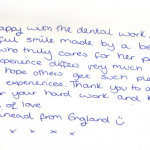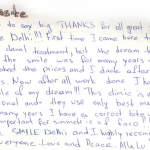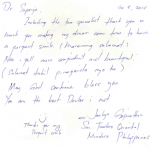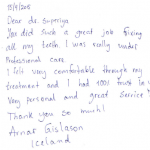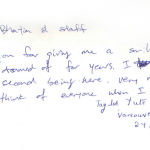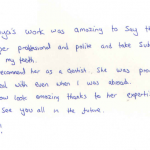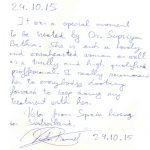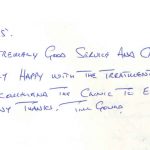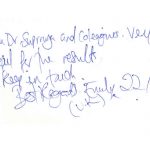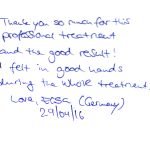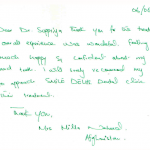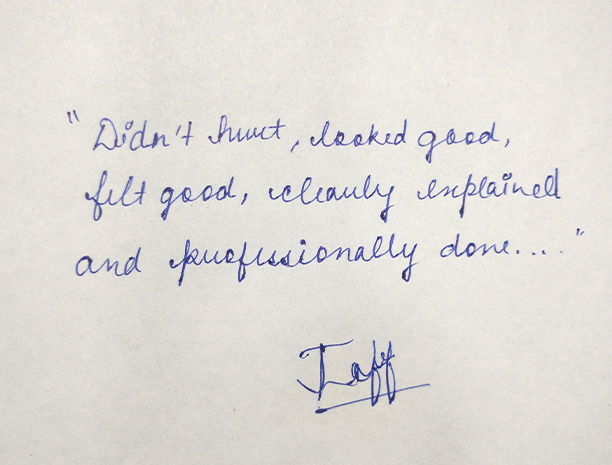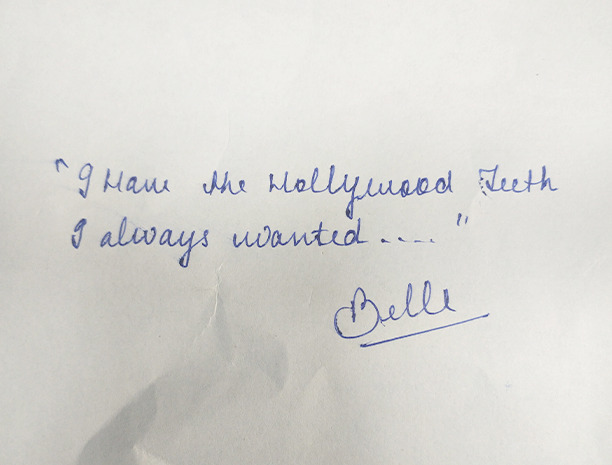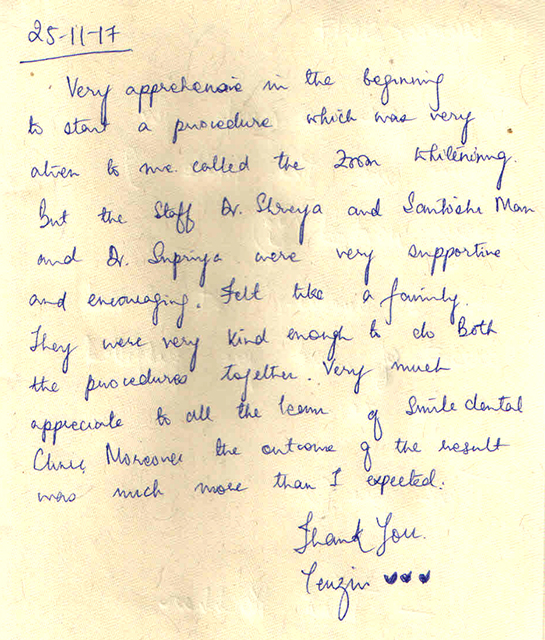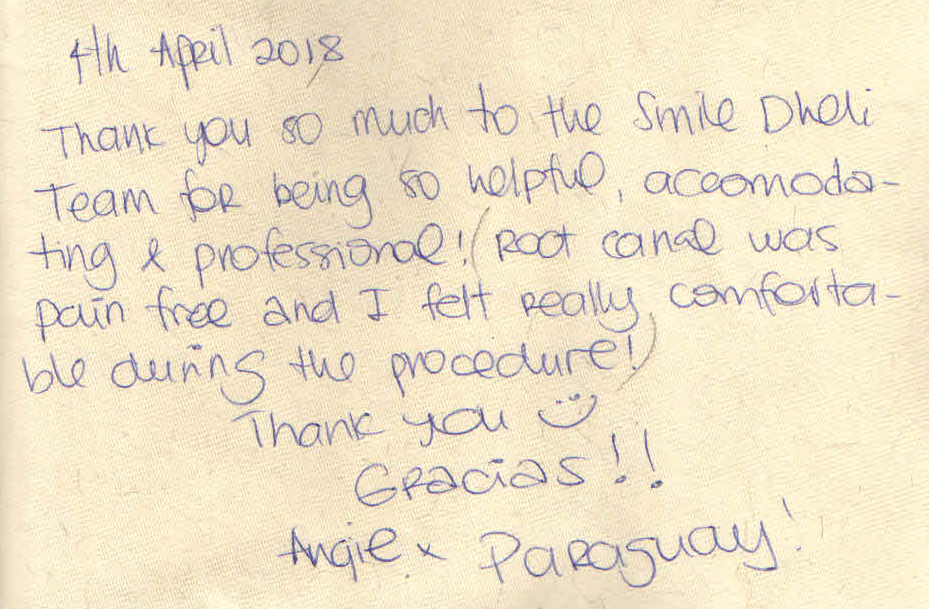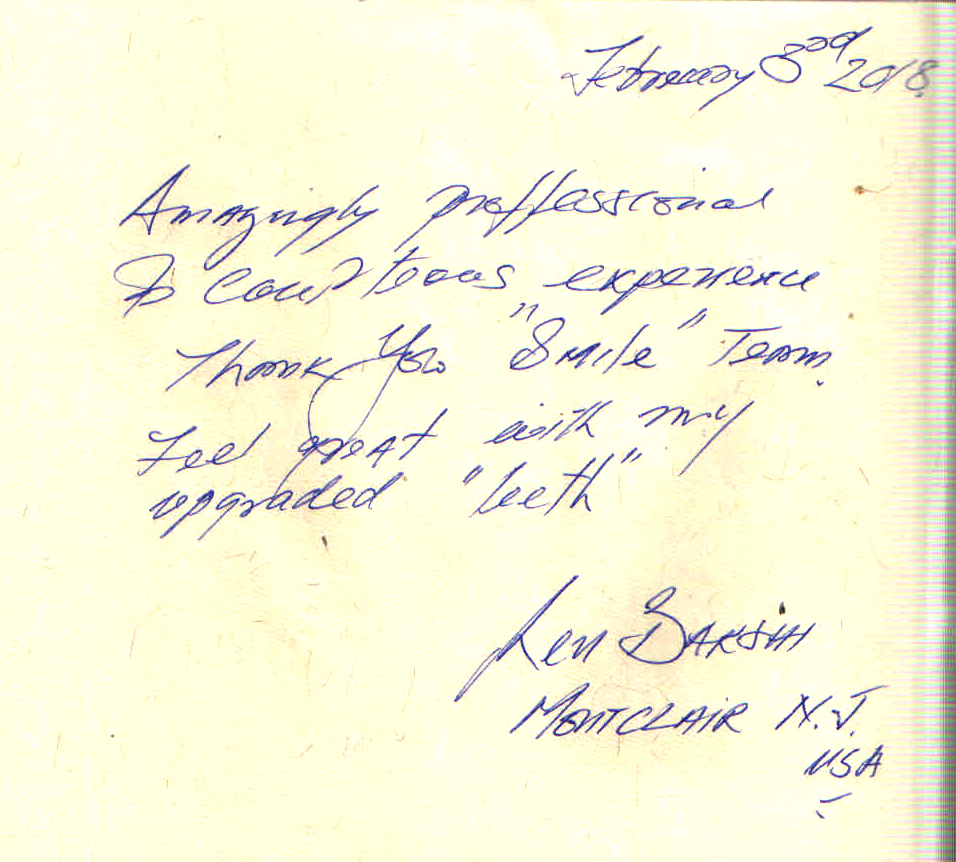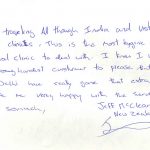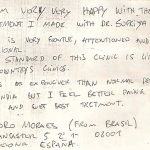Root Canal Treatment in India
Guaranteed, Painless, One Sitting Root Canal Treatments (RCT)
At Smile Delhi – The Dental Clinic, which is providing the root canal treatment in South Delhi, here 95 percent of Root Canal treatments are done in one sitting. The latest rotary instruments make the procedure efficient and quick. The time of the entire treatment is just 45-60 minutes, which makes this treatment popular. We guarantee you a painless experience during and after your appointment. With technology backing dentistry painless root canal treatment in Delhi has become a sort of a norm.
Painless, One Sitting Root Canal Treatment
At Smile Delhi – The Dental Clinic, which is providing the root canal treatment in South Delhi, here 95 percent of Root Canal treatments are done in one sitting. The latest rotary instruments make the procedure efficient and quick. The time of the entire treatment is just 45-60 minutes, which makes this treatment popular. We guarantee you a painless experience during and after your appointment. With technology backing dentistry painless root canal treatment in Delhi has become a sort of a norm. We pride ourselves to have the best RCT specialist in Delhi in our team of specialist dentist.
“With my own two root canal treatments done by our specialist. I can say from personal experience, that my treatments were painless, and I did not need any painkillers after the treatment. It was like magic; in 45 minutes I went from excruciating pain to zero pain”…. Dr Suprriya
Root canal treatment in Delhi/universally involves 3 procedures, which lead to the thorough Bio mechanical preparation of the root canal system;
- The mechanical removal of the infected nerve tissue/pulp and dentin.
- Flushing the root canals copiously with irrigants like) Sodium Hypo chloride (Warm), EDTA, Hydrogen Peroxide, Chlorhexidine Gluconate, Normal Saline
- Enlarging the canals and preparing it with the rotary files, to accommodate the filling
What is ‘Single Sitting RCT’?
With the advancement in dentistry, single sitting RCT is popular these days. Single sitting RCT is done when there is no periapical infection. The best RCT specialist in Delhi can do this procedure effortlessly. The treatment is completely painless in one sitting. The procedure takes about 45 minutes to an hour when done in the best dental clinic in South Delhi/Delhi.
When Do I Need a Root Canal Treatment?
If you have symptoms that include pain, prolonged sensitivity to heat or cold, tenderness to touch or while chewing, discoloration of the tooth or swelling in the tooth you should contact the best dental clinic near you and they advise you to get single sitting painless root canal treatment, if needed. This happens because the nerves of the tooth become acutely inflamed or infected because of decay or injury. The pulp/nerve tissue will need to be treated, in order to save the tooth and stop the infection from spreading.
Root canal treatment in Delhi is a very common procedure as people prefer to save their tooth instead of having them removed.
Why is ‘Smile Delhi – The Dental Clinic ’a Good Choice for Root Canal Treatment/Is RCT Permanent?
If proper expertise, materials and sterilization is used for the root canal treatment the tooth can carry on functioning normally for 15 to 20 years. Since we, at ‘Smile Delhi – The Dental Clinic’ can vouch for all the three mentioned factors, our success rate in the last 24 years of our practice is 98% and the tooth last easily for 15 to 20 years. We pride ourselves to have the best RCT specialist in Delhi. Our rates are competitive relative to the RCT cost in Delhi in respect to the expertise we provide.
Fillings
If a small amount of food debris is left in your teeth, (which usually happens when one misses night brushing/or is careless with it) the bacteria which are present in the mouth react with the food. As a result, acid is produced. This acid starts dissolving the tooth leading to decay/cavity/caries or a hole in the tooth.
Inlays
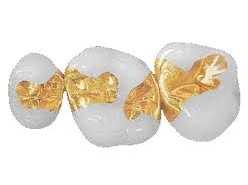
Onlays
An onlay is an indirect restoration (filling) consisting of a solid substance (as gold or porcelain). In dentistry, an onlay is an indirect restoration (filling) consisting of a solid substance (as gold or porcelain) fitted onto a tooth and cemented into place. This is done when the tooth damage is extensive involving one or more of its cusps. It is conservative and saves tooth structure.

Post and Core
Post and core is essentially a foundation restoration for a tooth. This is used to sufficiently restore a tooth’s morphology or shape, followed by future restoration such as application of a crown. This is done when there is extensive loss of tooth structure as a result of decay, fracture or other causes.

Here is what some of our patients had to say, regarding their experience of root canals treatments done at our clinic.
Tom P. Darriington, Australia
“Faced with the need for a Root Canal I went white as a sheet. Wasn’t that synonymous to some medieval tortures? Well I decided to go through with it in Delhi instead of Seattle. I’ll tell you – it was painless. I wasn’t even numbed for the event. And of course financially speaking, it was not at all shocking. A quite & professional atmosphere, plus, Dr. Suprriya’s charming way with people allows me to highly recommend the clinic.”
Maria Mahapatra, Orissa
“One of the best doctor’s I have been ever been treated by is Dr. Suprriya Bhatia. It was a pleasure meeting you and being treated by u. U gave me a reason to smile once again in life and saved me the embarrassment meeting people and my husband. U have proved to me that root canal treatment isn’t painful. I wish u all the best in life. And May God bless u in every step u take. Thanks a lot.” Suprriya
Sanjay Rath, New Delhi
“I may say with complete confidence that you are not only very skilled but also very caring. Two major root canals, that too involving molar, 5 crowns and a bridge and a dozen bonding restorations without PAIN!!!. No swelling, no bleeding eating normal foods…WOW! I’ll be back.” Wishing you the best Regards
Krishnan Amex, New Delhi
“Dear Ma’am, Thank you so very much for your excellent skill when I had my Root Canal. I couldn’t still believe the problem has been treated because it was really painless with no discomfort at all. Keep up your good work.Thanks again so very much.”
Frequently Asked Questions
Is There an Alternative If I Don't Want to Go for Root Canal Treatment?
Is Root Canal Treatment Painful?
Can Antibiotics Avoid a Root Canal?
What Should I Avoid Eating after a Root Canal?
- Just after the root canal is completed, do not eat anything till the anaesthetic affect wears out.
- Eat on the opposite side to the tooth that has been worked on, after the anaesthetic affect worn off.
- Chew slowly so that you do not risk the food ending up on the side you are avoiding.
- Just after the root canal procedure is done you should avoid hot drink to prevent burning or biting your lip or tongue like hot tea, coffee etc. as the tooth is still under the anaesthetic affect.
How Long after the Root Canal Can I Eat?
How can I Avoid the Need for Root Canal Treatment in the Future?
- Visit your dentist regularly twice a year for professional cleanings and examination. This is important as dental problem remains silent for a long time. A cavity in a tooth will only give pain if it has reached the nerve of the tooth (then the tooth needs a root canal).
- Brush and floss your teeth twice a day, Post breakfast and post dinner.
- Rinse your mouth every time you eat or snack in between the meals, to remove any food stuck in the mouth immediately.
- Eat a healthy diet low in sugar, high in fiber and avoid acidic beverages such as sodas, sugary drinks etc.
- If you actively participate in sports, consider wearing a mouth guard/ sports guard to protect your teeth from injury.






